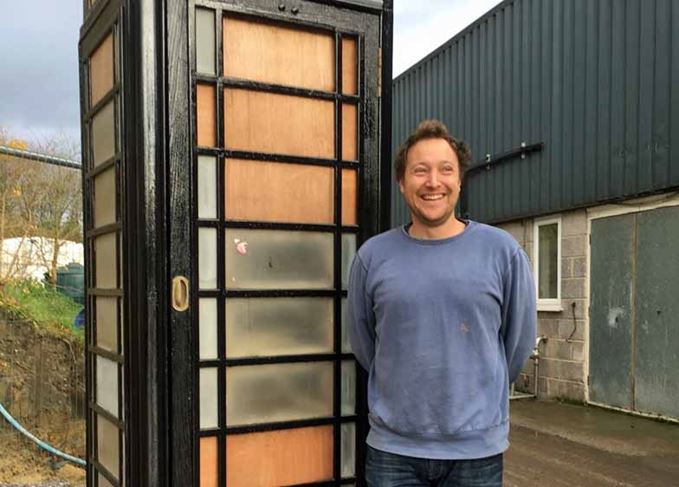


A cow's gestation period is approximately nine months.

Dairy farmers usually begin breeding or artificially inseminating heifers around 13 months of age. Male calves can either be used later as a breeding bull or sold and used for veal or beef. If a replacement cow turns out to be a substandard producer of milk, she then goes to market and can be slaughtered for beef. Depending on market conditions, the cow may be bred with a "dairy bull" or a "beef bull." Female calves ( heifers) with dairy breeding may be kept as replacement cows for the dairy herd. To maintain lactation, a dairy cow must be bred and produce calves. The systems used greatly depends on the climate and available land of the region in which the farm is situated. These cattle are generally lower in milk production and are herded multiple times daily to be milked. In extensive systems, cattle are mainly outside on pasture for most of their lives.
#Dairy milk phonebox free
These cattle are tethered within their stalls with free access to water and feed are provided. In a tie stall system, the milking units are brought to the cows during each milking. Free stall style barns involve cattle loosely housed where they can have free access to feed, water, and stalls but are moved to another part of the barn to be milked multiple times a day. These cows are housed indoors throughout their lactation and may be put to pasture during their 60-day dry period before ideally calving again. This involves formulating their diet to provide ideal nutrition and housing the cows in a confinement system such as free stall or tie stall. Intensive systems focus towards maximum production per cow in the herd. ĭairy farming, like many other livestock rearing, can be split into intensive and extensive management systems. The top breed of dairy cow within Canada's national herd category is Holstein, taking up 93% of the dairy cow population, have an annual production rate of 10,257 kilograms (22,613 pounds) of milk per cow that contains 3.9% butter fat and 3.2% protein. dairy farms-about 13 million fewer than there were in 1950. The United States dairy herd produced 84.2 billion kilograms (185.7 billion pounds) of milk in 2007, up from 52.9 billion kilograms (116.6 billion pounds) in 1950, yet there were only about 9 million cows on U.S. In New Zealand, the average herd has more than 375 cows, while in Australia, there are approximately 220 cows in the average herd. The United Kingdom dairy herd overall has nearly 1.5 million cows, with about 100 head reported on an average farm. The number of small herds is falling rapidly with the 3,100 herds with over 500 cows producing 51% of U.S. The United States has an estimated 9 million cows in around 75,000 dairy herds, with an average herd size of 120 cows. Herd sizes vary around the world depending on landholding culture and social structure. For other dairy samples, see Check Mark Laboratory.Dairy cows may be found either in herds or dairy farms where dairy farmers own, manage, care for, and collect milk from them, or on commercial farms. *For testing of raw fluid bovine, ovine, and caprine milk only. Please include a completed copy of the Milk Lab Sample Submission Form when submitting samples. Sample volume should be a minimum of 20ml or 2 oz vial filled to the etched line. Samples can be either preserved or unpreserved.Ship using a next day delivery service to Dairy One Milk Laboratory at 720 Warren Rd, Ithaca, NY 14850.Always include ice packs in either shipping option. If using your own shipping container, stabilizing samples with small bubble wrap or paper is recommended as packages get jostled in transit and may arrive spilled if not supported or cushioned. Ship in Milk Sample Shipper or ship in your own shipping container.For more information on milk diagnostics, visit the Animal Health Diagnostic Laboratory. Conditions that can be diagnosed using your milk samples are: pregnancy, Johne’s Disease, BVD, and Leukosis. Milk Diagnostics are also available and can use the same samples that are submitted for component analysis. The Fossomatic uses Flow Cytometry for measurement of somatic cells (SCC) in milk. Ketosis Screening using Beta-hydroxybuterate (BHB) coming soon.The Milkoscan uses Fourier Transform Infrared Spectroscopy (FTIR) for the determination of these milk components*: Dairy One’s state-of-the-art laboratory rapidly analyzes milk samples using Milkoscan and Fossomatic instruments.


 0 kommentar(er)
0 kommentar(er)
